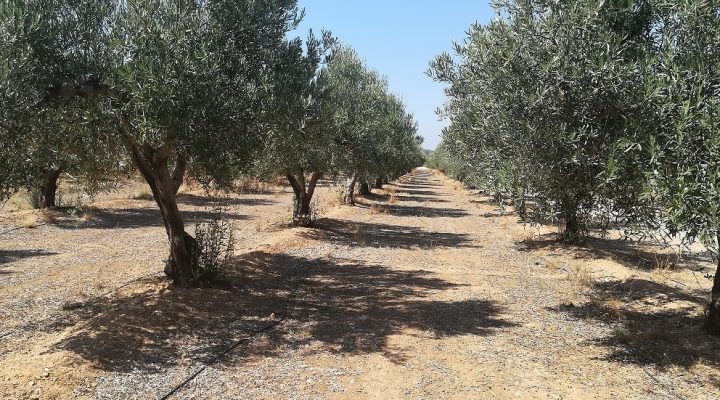In recent years, educational outreach efforts have increasingly ventured into streaming platforms as a means associated with engaging audiences and selling scientific literacy. One distinctive platform in this regard is the Research Channel, which has emerged as being a valuable resource for delivering state-of-the-art educational content to people around the world. This article explores the actual role of streaming systems, particularly the Science Channel, throughout educational outreach and the prospective impact on enhancing scientific literacy among diverse audiences.
Loading platforms offer unparalleled convenience and convenience, allowing consumers to access a vast array of articles anytime, anywhere, and on just about any device with an internet connection. This particular accessibility extends to educational content, including documentaries, lectures, along with interactive programs focused on various scientific disciplines. The Science Funnel, in particular, offers a wide range of computer programming that covers topics for example astronomy, biology, chemistry, physics, engineering, and environmental scientific research, catering to audiences different and backgrounds.
One of the key advantages of streaming platforms such as the Science Channel is their ability to reach diverse people on a global scale. By causing educational content available online, these platforms transcend geographical and also logistical barriers, enabling persons from different regions and socio-economic backgrounds to access high-quality educational resources. This democratization of access to knowledge is particularly significant for underserved communities with limited access to classic educational resources.
Moreover, internet streaming platforms offer interactive attributes and multimedia elements that will enhance the learning experience and have interaction viewers in meaningful approaches. For example , the Science Channel’s development often includes simulations, animated graphics, visualizations, and interactive quizzes that reinforce key principles and stimulate curiosity. These kinds of interactive elements not only help make learning more engaging in addition to enjoyable but also cater to diverse learning styles and personal preferences, thereby increasing the effectiveness of informative outreach efforts.
Educational outreach through streaming platforms in addition facilitates lifelong learning and also continuous education beyond conventional classroom settings. Viewers may explore topics of interest from their own pace, delve dark into specific subjects, and revisit content as required to reinforce learning. This self-directed approach to learning promotes interest, critical thinking, and intelligent curiosity, empowering individuals to consider ownership of their educational vacation and pursue lifelong mastering opportunities.
Furthermore, streaming tools offer opportunities for collaborative learning and knowledge discussing among users. Online community forums, discussion boards, and social media systems provide platforms for people to connect with like-minded men and women, share insights and facets, and engage in discussions regarding scientific topics. These organizations foster a sense of belonging along with camaraderie among learners, making a supportive environment for collaborative learning and knowledge swap.
The Science Channel and other streaming platforms also play a vital role in bridging the hole between scientific research as well as the general public. Through documentaries, selection interviews with experts, and coverage of scientific discoveries as well as breakthroughs, these platforms take the latest developments in research and technology into the properties of millions of viewers globally. By making science more accessible and also relatable, streaming platforms support demystify complex scientific principles and inspire curiosity and wonder about the natural world.
Moreover, educational outreach through streaming platforms is a catalyst for impressive the next generation of scientists, manuacturers, and innovators. By showcasing the excitement and esprit of science, technology, executive, and mathematics (STEM) fields, all these platforms motivate young individuals to pursue careers with STEM and actively engage with scientific inquiry and finding. The Science Channel’s programming, specifically, features content aimed at teenagers and children, sparking interest in STEM subjects and fostering a long term passion for learning.
In conclusion, educational outreach through internet streaming platforms, such as the Science Route, plays a crucial role with enhancing scientific literacy and also promoting lifelong learning amid diverse audiences. By providing available, engaging, and high-quality educative content, these platforms persuade individuals of all ages and backgrounds to explore the wonders of technology, deepen their understanding of complicated scientific concepts, and become informed and engaged citizens within an increasingly technology-driven world. Continue, continued investment in educative outreach efforts through internet streaming platforms holds the potential to transform the way we learn about as well as interact with the world around us, paving the way for a far more scientifically literate and informed society.
Foodstuff Safety and Quality Assurance: Cutting-edge Technologies in Foodstuff Science
Advancements in engineering have revolutionized the scenery of food safety and quality assurance, enabling the meal industry to adopt innovative approaches to ensure the integrity in addition to safety of food products. This information explores the latest cutting-edge technology in food science that happen to be reshaping the way food safety and quality are examined, assessed, and maintained over the food supply chain.
One of the most major advancements in food safety technology is the application of blockchain technology. Blockchain provides a clear and immutable ledger that records every step of the food supply chain, from farm to pay. By leveraging blockchain, foods producers and distributors could trace the journey connected with food products in real-time, guaranteeing transparency and accountability. This technology enables swift identity and containment of foodborne outbreaks, thereby enhancing meals safety protocols and bolstering consumer confidence.
Another innovative technology in food security is the use of sensors along with Internet of Things (IoT) devices to monitor various details such as temperature, humidity, and pH levels throughout the meals production and distribution method. These sensors can find deviations from optimal problems in real-time, alerting foodstuff producers to potential troubles before they escalate. Through leveraging IoT devices, food companies can proactively deal with quality control concerns, reduce waste, and optimize manufacturing processes to ensure the highest standards of food safety as well as quality.
Advancements in genetic testing and molecular diagnostics have also transformed food basic safety practices. Polymerase chain problem (PCR) and next-generation sequencing (NGS) technologies enable quick and accurate detection of foodborne pathogens, allergens, along with contaminants at the molecular amount. These molecular diagnostic applications empower food safety experts to identify and mitigate hazards more effectively, ensuring the safety involving food products and protecting public well-being.
Nanotechnology is another emerging area that holds great assure for enhancing food protection and quality assurance. Nanomaterials can be utilized to develop innovative presentation solutions that extend the particular shelf life of perishable foods, discover this prevent microbial contamination, and lessen the need for chemical preservatives. Additionally , nanosensors can be integrated into packaging elements to detect spoilage as well as contamination in real-time, supplying an extra layer of protection against foodborne hazards.
Artificial brains (AI) and machine understanding algorithms are revolutionizing foods safety by enabling predictive analytics and risk analysis. By analyzing vast amounts of data collected from various sources, AI algorithms can identify patterns and general trends that may indicate potential foodstuff safety risks. These predictive capabilities allow food companies to proactively implement safety measures and mitigate risks ahead of they pose a hazard to consumers. AI-powered methods can also optimize quality management processes, streamline inspections, and be sure compliance with regulatory expectations.
Remote sensing technologies, for example satellite imagery and drones, are being utilized to monitor farm practices and identify areas of concern, such as pesticide utilize, crop diseases, and land contamination. By providing real-time info and insights, remote realizing technologies enable farmers along with regulators to make informed selections to enhance food safety in addition to sustainability. These technologies in addition facilitate precision agriculture routines, optimizing resource usage as well as minimizing environmental impact.
Blockchain, IoT devices, genetic tests, nanotechnology, artificial intelligence, device learning, and remote realizing are just a few examples of the particular cutting-edge technologies revolutionizing meals safety and quality reassurance in the 21st century. By simply harnessing the power of these engineering, the food industry can ensure often the integrity, safety, and level of quality of food products, from farm to table. As technological innovation continues to evolve, it is essential to get food scientists, regulators, and industry stakeholders to stay up to date with the latest advancements and team up to address emerging challenges with food safety and quality assurance. By embracing creativity and adopting best practices, we could build a safer, more resistant food system for years to come.











Compartir